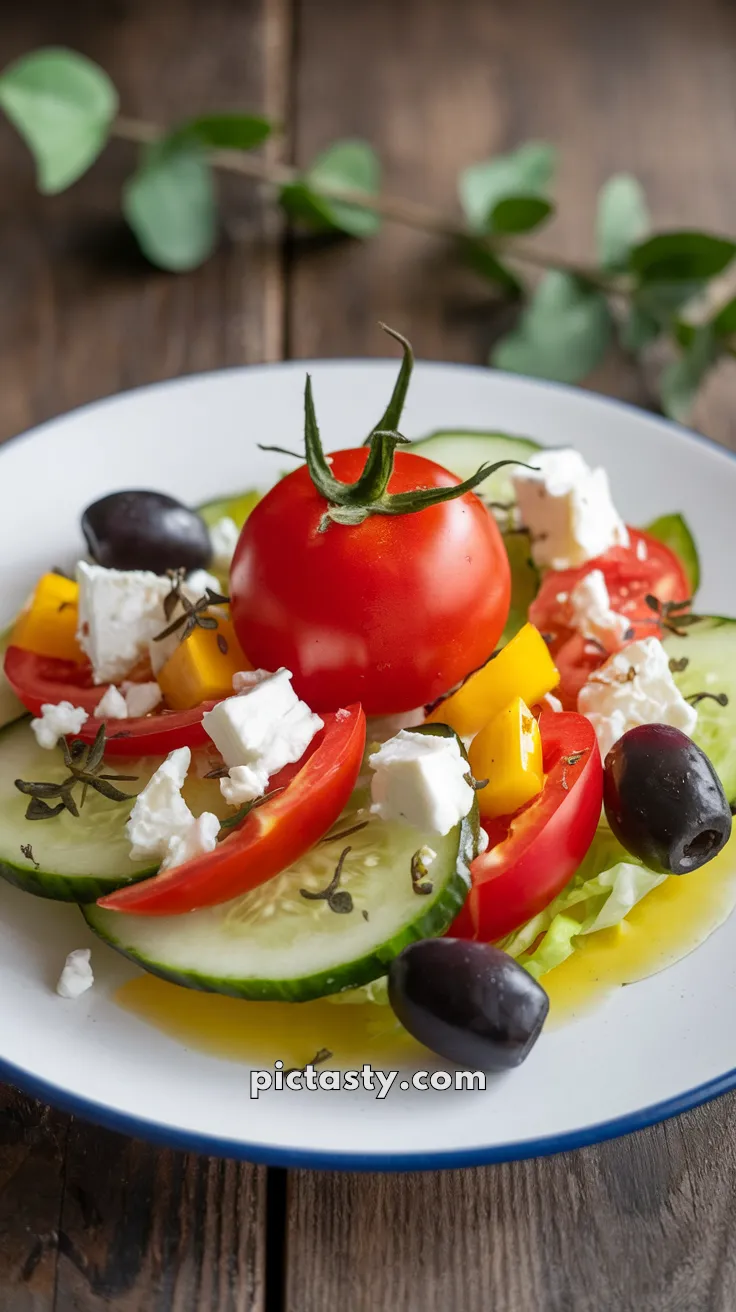Have you ever been enticed by the vibrant colors and fresh tastes of a Greek salad? I know I have. The crisp taste of freshly picked vegetables, the tanginess of the feta cheese, and that distinctive Greek dressing – it’s like a love story of flavors unfolding on your palate. Much like an artist blending colors on a canvas, creating a Greek salad involves blending a symphony of tastes and textures.
Crafting an authentic Greek salad is relatively straightforward, but do you know the secret to making it extraordinary? Well, the secret lies in the quality of the ingredients and the dressing. Now, are you ready to recreate this Mediterranean masterpiece in your kitchen? Let’s get started!
The History of Greek Salad
Let’s take a trip back in time to discover the origins of this iconic dish. The Greek salad, also known as horiatiki salata, has roots dating back to ancient Greece. Interestingly, the original version didn’t include lettuce – it was mainly cucumbers, tomatoes, and onions.
The addition of feta cheese, olives, and that distinctive dressing happened later, influenced by the availability of these ingredients in the Greek countryside. The Greek salad stays true to its traditional roots, offering a taste of Greece’s rich, rustic flavor palette.
The Significance of Quality Ingredients
The beauty of a Greek salad lies in its simplicity. But this also means that the quality of the ingredients plays a significant role in the final result. Indeed, the freshness of the vegetables, the creaminess of the feta cheese, and the richness of the olives will dictate the overall taste of your salad.
Always opt for the freshest produce you can find. Use ripe tomatoes, crunchy cucumbers, and make sure your olives are briny and firm. And when it comes to feta cheese, choose a high-quality one. The cheese should be creamy, tangy, and slightly salty to balance the freshness of the vegetables.
The Art of the Greek Dressing
Perhaps the most defining feature of a Greek salad is its dressing. A perfect Greek dressing creates a balance between the refreshing taste of the vegetables and the salty, briny flavors of the feta and olives.
The essential ingredients for a Greek dressing are extra virgin olive oil, red wine vinegar, lemon juice, garlic, oregano, and a pinch of salt and pepper. The art lies in getting the proportions just right. Too much vinegar or lemon could overwhelm the salad, while too little might leave it bland.
Ingredients
- Ripe tomatoes
- Crunchy cucumbers
- Red onions
- Green bell peppers
- Kalamata olives
- Feta cheese
- Extra virgin olive oil
- Red wine vinegar
- Lemon juice
- Garlic
- Oregano
- Salt and pepper
Instructions
- Start by cutting the tomatoes, cucumbers, onions, and bell peppers into suitable sizes.
- Combine these vegetables in a large bowl.
- Add the Kalamata olives and feta cheese to the bowl.
- In a separate bowl, mix the olive oil, vinegar, lemon juice, crushed garlic, oregano, and season with salt and pepper.
- Pour this dressing over the salad and mix until every piece is coated.
- Let the salad sit for a few minutes to let the flavors meld together before serving.
Cook and Prep Times
- Prep Time: 15 minutes
- Cook Time: 0 minutes
- Total Time: 15 minutes
Tips for Greek Salad
Remember, do not skimp on the quality of ingredients, especially the feta and olive oil. Additionally, let the salad sit for a while before serving; this allows the flavors to combine and intensify. Lastly, consider customizing the recipe according to your taste – add a dash of Dijon mustard or honey to the dressing for a unique twist.
Why This Recipe is a Must-Try
This Greek Salad recipe is a must-try because it gives you the authentic taste of Greece right in your kitchen. It’s an explosion of fresh flavors and rich textures that will transport you straight to a Mediterranean beach. Besides, it’s incredibly healthy and easy to make, perfect for a quick lunch or a light dinner.
Nutrition Information
- Calories: 200 kcal
- Fat: 14g
- Protein: 6g
- Carbohydrates: 15g

